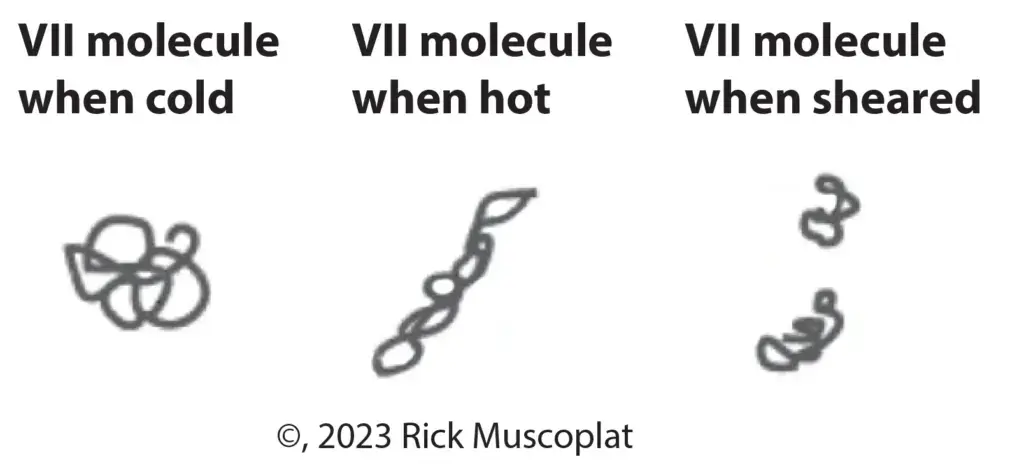Oil shear and viscosity
What is oil shear and how does it affect oil viscosity
Motor oil basics
Motor oil lubricates, carries away heat, and provides a cushion between metal parts to prevent metal-to-metal contact. Oil is constantly pumped into the clearances between the crankshaft and crankshaft bearings, crankshaft and rod bearings, camshaft and camshaft bearings, camshaft and lifter, and camshaft and high-pressure fuel pump.
Oil viscosity basics
Fact 1) All oil (motor oil, olive oil, canola oil, etc.) thickens when cold and thins when heated.
Fact 2) Viscosity is defined as a fluid’s resistance to flow at a given temperature. Honey, for example, is not only thick when cold, but also has a high resistance to flow. Once warmed, it thins and flows faster. So has high viscosity when cold and a lower viscosity when warm.
Fact 3) The relationship between temperature and viscosity is known as the oil’s viscosity index (VI). The higher the viscosity index of an oil, the less its viscosity changes with temperature
Fact 4) Multi-viscosity oil has a higher VI than single viscosity oils
Multi-viscosity motor oil is formulated with thin but high VI base oil which is fortified with viscosity index improver (VII) additives. The base oil is thin enough to pump and flow well at cold temperatures and the VII allows the oil to thin less when hot than it normally would without the VII additive.
How does VII work?
VII additive is complex polymer molecule that is coiled and spherical in shape at cool/cold temperatures. As the polymer heats up and is pressurized the molecule deforms into a long chain. The elongated long-chain molecules impede oil flow, thereby increasing the oil’s viscosity index. The increased viscosity allows the oil to support more load than would otherwise be possible. When the oil cools down, the molecule returns to its coiled/spherical shape.
What is Oil shear?
Oil shear is the thinning of motor oil due to extremely high pressures. Oil shear can be temporary or permanent
Temporary viscosity loss due to shear forces
During operation, the crankshaft and camshaft shafts spin the oil, creating internal friction, heat and some thinning. However, when the engine is under load, the oil in the clearances is stressed/sheared even further, causing it to thin beyond what its temperature would normally indicate. When the shear stress is removed, the distorted polymer molecule resumes its original spherical shape and the oil returns to its original viscosity. That’s what this type of shear thinning is referred to as “temporary viscosity loss.”
Permanent oil shear
Permanent oil shear is defined as the permanent thinning of the oil caused by the destruction of the large viscosity index improver (VII) molecules.
VII destruction happens during extreme shear conditions when the deformed polymer molecules are literally pulled apart into two smaller chains, which can then be cut again into four chains (and so on and so on).
Smaller polymer chains have less impact on the oil’s viscosity than a single large chain, so the oil’s overall viscosity index falls. Unlike temporary viscosity loss where the oil returns to its original viscosity once the stress is removed, broken polymer chains don’t reform into a single large chain and oil doesn’t return to its original viscosity. At this point, the oil is permanently damaged and can no longer maintain its high temperature viscosity or provide the same level of protection to metal components.
©, 2023 Rick Muscoplat
Posted on by Rick Muscoplat

